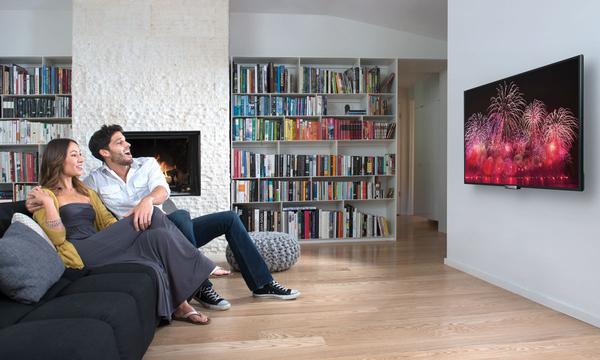TV buying guide: 9 things you need to know
If you're buying a TV today, this advice is OK, but it's still got you spending a lot more than you need to spend. Here's a bit more sensible advice.1) You won't really find any TV in 720p that you'd be putting in a living room. Most 720p sets are 32 inches or less, making them bedroom or kitchen TVs. There's nothing wrong with 720p on smaller sets, because your eyes can't tell the difference between 720p and 1080p at those small sizes. A larger 720p set (if you can find one...) really isn't that bad, either. Most cable channels still broadcast in 720p, and 720p is still better for high-motion events like sports.2) 120 Hz refresh rate is great and all, but, as I mentioned, most sports today is still broadcast in 720p at 60Hz. So your 1080p TV with a 60-Hz refresh rate will probably be fine. Unless you're a gamer and have a huge TV, you probably won't have any problem with a 1080p set at 60Hz. But 120 Hz is fast becoming standard, so it can't hurt to pick that up.3) Don't consider a 4K/UHD TV. AT ALL. There's virtually no content available, and unless you either 1) sit REALLY close, or 2) have a HUGE TV, you won't notice the difference. In order to tell the difference between 1080p and 4K/UHD on a 60 inch TV, you have to sit about 5 feet away or closer from your set. I can guarantee you you're not going to sit that close, and you probably don't have a TV that big anyways. Five years from now you can buy that 4K TV, and in the meantime you can spend a fraction on a 1080p set that will be perfectly adequate for the next few years at least.4) OLED is really nice to look at, but you're wasting your money at this point. Unless you really want one and can afford it, it's generally more expensive than it is necessary.5) Pay no attention to Color Gamut and Contrast Ratio info. If you don;t know what it is already, you really don't need to know.6) 4 HDMI ports usually come on large, expensive sets. Chances are you'll only need 2, maybe 3. Unless you have a lot of game consoles (like I do), 2-3 ports is just fine. Plus, if you run out, you can get great external HDMI switchers for cheap on Amazon. Add an external device for $10, or pay $100 more for that extra port built in? I know which one I'd choose.7) Curved TVs are just stupid. They reduce your range of viewing, do absolutely nothing for image quality, and just costs more. Don't waster your money.8) Don't waste your money on a "Smart TV". EVER. You end up spending a few hundred extra over non-smart TV when you can add, say, a Roku 3 for $70 externally. Also, because there is no one standard smart TV operating system, most smart TV operating systems are abandoned quickly, meaning you'll get very few apps, little support, and a device that's effectively obsolete in 2 years. Better to replace your cheap streaming stick (like a $35 Chromecast) every couple of years than the whole TV.9) You don't need a soundbar. They're a mark-up item, nothing more. Yes, some of the cheapest TVs have terrible speakers. But most average TVs sound perfectly fine on their own. If you have a huge room, just invest in a surround sound system and skip the soundbar entirely.10) Never buy the warranties. Ever. You'll never use it. In short, most people will be just fine with your standard, run-of-the-mill 1080p 60Hz TV. While your specific needs may dictate whether or not you need things, like a higher refresh rate (gaming), a basic TV will suit your needs. And, you can add things like a Roku or an external HDMI switch for far less than it would cost you to simply buy a smart TV or adding one extra HDMI port.
Reply

